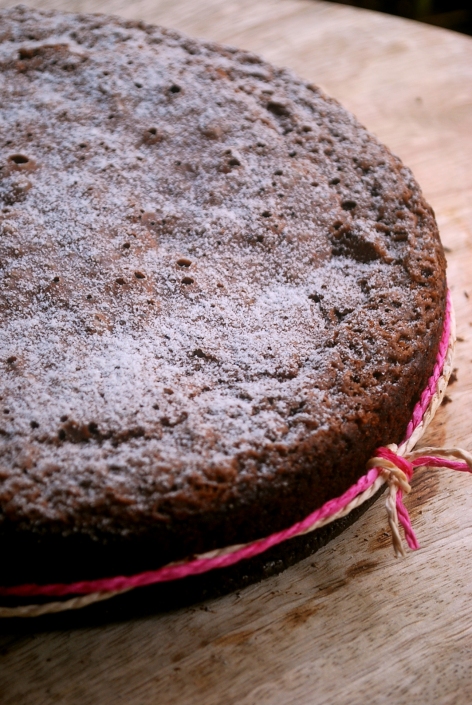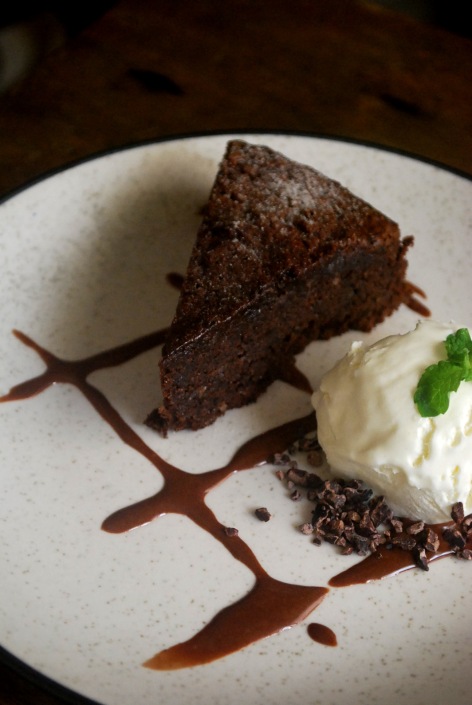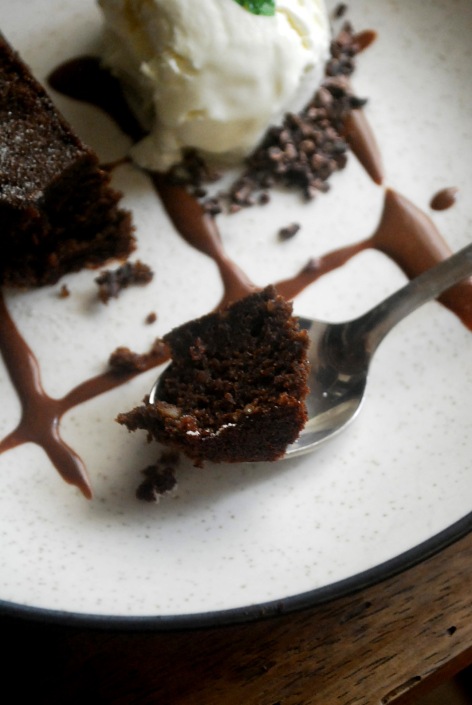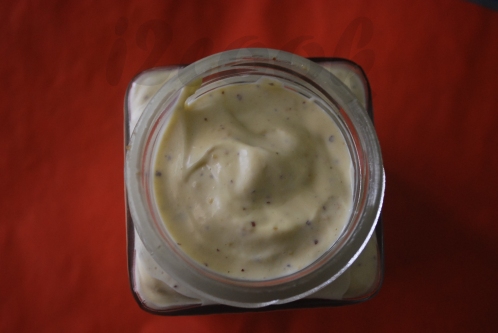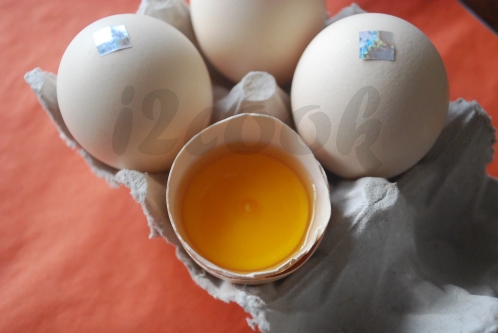Keep calm and bake some chocolate cake….
Posted: September 22, 2013 Filed under: Baking, Gulten-Free | Tags: baking, buckwheat, cake, chocolate, chocolate cake, dark chocolate, free-range eggs, glutenfree, i2cook, i2write, peanut butter, raw sugar, rodinhoods 4 CommentsRunning two startups is not easy! I’m tired and stressed. But I also enjoy the new learning. It’s a mixed bag of feelings, I tell you. On a positive note I’ve learnt to multi-task. Managing i2cook.com deliveries and dealing with day-to-day production. On the other hand I’m procuring and on the other I’m selling. For instance, right now, I’m roasting peanuts and writing this post. Ain’t I cool! 😉
There are days when I’m down or just worked up! I don’t like monotonous work and I do take some productive (ahem) breaks. My logic is very simple, when the pressure at work is too much for me to handle, I just bake. Simple. Bake. Bake bread, cookies or just simple cake. I baked this chocolate cake like three times in less than two months! (God save me from the calories). Once I have like a big unit producing tons of peanut butter, I shall dedicate a room for me. I will have an oven and only bake whenever I feel like taking a productive break ;).
This chocolate cake is simple and gluten-free. I was inspired to make this cake by Smitten Kitchen but I’ve made some changes by trial and error. All the ingredients are meant to be with each other, buckwheat, almonds and dark chocolate is a marriage made in heaven. This cake asks you to bake. Trust me. That is why I ended up making it three times before posting the recipe.
Just bake this cake and you will find reasons like me to keep baking 🙂
Ingredients
100 gms dark couverture chocolate (70%)
100 gms butter
100 gms organic raw sugar
3 free range eggs
30 gms organic buckwheat flour
35 gms almond meal (blend in silvered almonds in the grinder until you get a fine powder)
1 tsp baking powder
Procedure
- Mix the chocolate and butter in bowl and place it on a double boiler. Allow it to melt completly and keep aside.
- Measure raw sugar in a bowl and break three eggs. Beat it for atleast 10 minutes or till you get a thick and pale yellow mixture. This is the most important part of the cake and a little muscle work (or a fancy gadget) can give you that super crumbly texture.
- Gently fold in the melted chocolate mixture.
- Sprinkle the buckwheat and almond meal over the batter and fold gently to combine.
- Pour into prepared pan and bake for about 25 minutes. Check for doneness by inserting a toothpick in the center of the cake and it should come out dry.
- Let cool for 5 minutes in the pan and invert onto the rack. Serve warm or at room temperature dusted with powdered sugar or dolloped with lightly whipped cream or your favourite ice-cream.
I used organic raw sugar & cocoa beans for plating from i2cook.com.
Updates
“i2” series is a new intiative to network and encourage young entrepreneurs.The theme for this month is “i2write” with two awesome hosts! Please join us if you’re in Mumbai. I was invited by Rodinhoods to present my startup – “There but not there!” Read my post here to view the presentation and what i2cook has been upto 🙂
I like my chicken free range…..
Posted: May 16, 2012 Filed under: Reviews | Tags: broiler, free range chicken, free-range eggs, gauti, how to cook chicken, nati koli, organic chicken 7 CommentsFree range chicken (nati koli or gauti) are allowed to roam freely and are not coped up in a cage like factory-style farming. Many free-range chickens are allowed to roam free to eat bugs, seeds, berries and other natural vegetation. The chickens may come home to roost in a coop at night, or they may be essentially wild and roost in trees or any place they feel is safe. They are fed natural food in an natural habitat. This leads to a much leaner chicken, fat free and free from any injected chemicals.
The advantages of free range is that it has less fat, is juicy, thin and has translucent skin, taste and firm flesh but not tough. However, the cost of a free range chicken will be much more than a broiler. Free range chicken is difficult to find in our Indian supermarkets but the eggs are now available in many stores. You can check with you’re local chicken shop. I did a post/recipe on free range eggs recently and here it is.
Spot the difference: free range (left) & broiler (right)
Organic chickens are not only free to roam but are also fed grains which are organic. They are also certified as organic. They cost much more than the free range or the broiler and I haven’t come across anyone in India producing enough to supply to large scale supermarkets.
Benefits of free range or organic vs broiler:
- One serving of organic, free-range chicken provides you with more protein than a serving of conventional chicken.
- Organic, free-range chicken provides healthier levels of saturated fat and the most beneficial levels of polyunsaturated fat, omega-3 and omega-6 fatty acids.
- Purchasing organic chicken ensures that you and your family are not ingesting unnecessary antibiotics that may lead to antibiotic-resistant infections.
Read more on benefits of free range chicken
- Free range has lean meat and it means that the slower cooking yields better results.
- It is advisable to cook the chicken at a temperature of 165 degrees. I would suggest to use a meat thermometer to check if you’re free range is under cooked or over cooked.
- Marinating the chicken (or chicken breasts in particular) with beer for several hours helps to tenderize for grilling or barbecuing.
- Also remember that a perfect cooked chicken has a lot to do with it’s size, pieces followed by internal temperature until you’re comfortable with the time required to cook the chicken – it is often more than the regular chicken recipes.
Personally I prefer free range to broiler because of the taste. A nati koli saaru (chicken curry available in South) won’t be the same when cooked with a broiler. I discovered that free-range, REALLY DO have superior meat – they aren’t just the same product with a different price – they are VERY different meats! I’ve noticed that people who have been brought up on or have been exposed to rural India are aware of the taste and cooking techniques a lot more than the ones who have been only brought up on broilers. Eating free range eggs or chicken is more of a conscience and is left to you to compare notes.
Mayonnaise with free-range eggs
Posted: January 6, 2012 Filed under: Spreads | Tags: cage-free bird, free-range eggs, i2cook mustard, mayonnaise, natural mantra Leave a commentHomemade Mayonnaise has real flavour as opposed to the insipid taste of the jarred version. You can adjust the consistency, depending on what you are using it for. Stiff Mayo is good for serving with deep-fried and grilled food, while a loser mayo can be used as a sauce for seafood or hot or cold veggies.
Vegetable oil work best as they are tasteless and can be used for multipurpose mayo. Olive oil or any nut oil can be used to make more distinctively flavoured mayo. Most mayo, can be made by hand or in a blender, but mayo made with olive oil should be made in mortar pestle by hand, because the aggressive action of the blender or even a whisk, may compromise the flavour of the oil and may turn slightly bitter.
I will be sharing the blender method. Most recipes suggest to use only the yolk. It can also be made using solely egg whites, with no yolks at all, if it is done at high speed in a food processor. The resulting texture appears to be the same. I prefer to use the whole egg. The choice is yours 🙂
2 whole free-range eggs
1tbs i2cook mustard
1tsp vinegar
250gm (approx) sunflower or any vegetable oil, even soy oil is good
salt & pepper to taste
Combine the eggs, mustard, vinegar in a blender. With the blender on the lowest speed, pour oil in a slow but steady stream through the opening in the top of the blender, blending until the mayo stiffens. Season to taste with salt and pepper.

Mayo may break – that is the oil may separate out of emulsion and the mayo may turn loose and grainy( if the oil is added too fast at the beginning or the mayo is too stiff). If its stiff – just add water, vinegar and blend well. If the mayo breaks – just rework the broken mayo into another egg in a second bowl.
Plain mayo can be flavoured to create innumerable variations, by adding dry or fresh herb/herbs or by adding capers or finely chopped gherkins. You could also colour the mayo orange by adding saffron.
A lot of us wonder or are confused about what does cage-free birds or free-range eggs mean? Last month there was an interesting article on cage-free birds in BBC Good Food, India in which it mentioned that, the cage-free birds are not cooped up in a cage unlike the commercial ones. In the commercial ones, the cages are placed in a row and stacked several tiers high. The cages are so cramped up that the living space is less than an A4 size paper. On the other hand, cage-free birds are not kept in cages and are allowed open access to the outdoors.
In rural setting, birds are allowed to forage in the backyard and in urban one they are allowed to roam freely within a large compound.
Free-range eggs are more expensive than the commercially available eggs. The well known brand, Keggs, based in Delhi, costs 55/- for half a dozen which is nearly triple the price. These eggs are at a premium cost since the egg production is not predictable and it is difficult to monitor how much feed each bird consumes. So at this rate the bird may lay an egg only once every two days.
There has been no scientific evidence to suggest that these eggs are more nutritious than regular eggs. Consuming free-range eggs is more of a conscience call.
In Mumbai, you can buy free-range eggs from Foodhall, at Palladium Mall, Nature’s Basket outlets and I’ve also spotted them at Jude’s Cold Storage, Bandra. You can also check with your local chicken shop if they could arrange for some locally.
This is my guest post at Natural Mantra’s blog.

